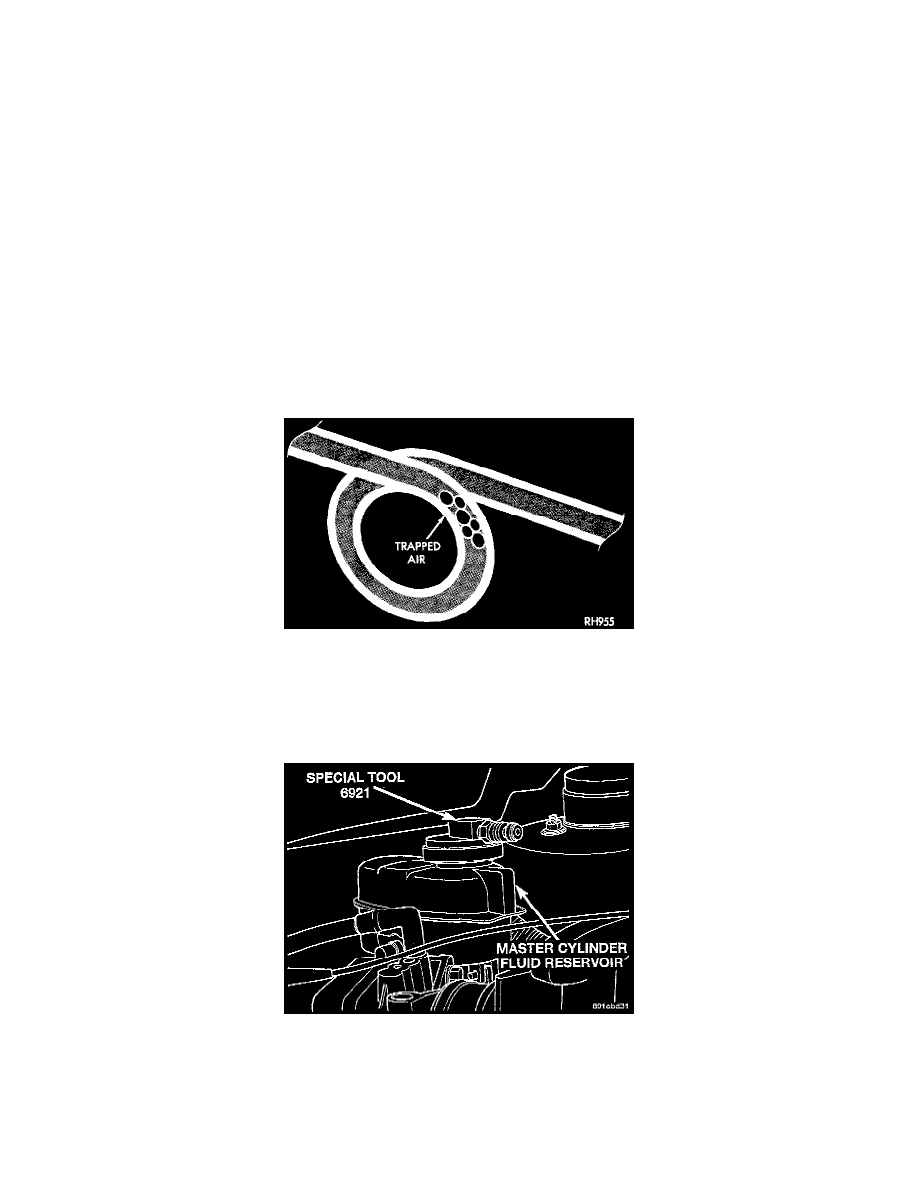Caravan FWD V6-201 3.3L VIN R MFI (1997)

Brake Bleeding: Service and Repair
Base Brake System Bleeding Procedures
Bleeding Base Brake Hydraulic System
NOTE: This bleeding procedure is only for the vehicle's base brakes hydraulic system. For bleeding the antilock brakes hydraulic system, refer to the
ITT Teves Mark 20 Antilock Brake System bleeding procedure in antilock brakes.
Pressure Bleeding Procedure
CAUTION:
-
Before removing the master cylinder cover, throughly clean the cover and master cylinder fluid reservoir to prevent dirt and other
foreign matter from dropping into the master cylinder fluid reservoir.
-
Use bleeder tank Special Tool C-3496-B with adapter Special Tool 6921 to pressurize the hydraulic system for bleeding.
-
When pressure bleeding the brakes hydraulic system the fluid reservoir filler neck must be removed from the master cylinder fluid
reservoir. Failure to remove the filler neck from the fluid reservoir, may result in the filler neck separating from the fluid reservoir when
the hydraulic system is pressurized.
Follow pressure bleeder manufacturer's instructions, for use of pressure bleeding equipment.
Air Trapped In Brake System
When bleeding the brake system, some air may be trapped in the brake lines or valves far upstream, as much as ten feet from the bleeder screw.
Therefore, it is essential to have a fast flow of a large volume of brake fluid when bleeding the brakes to ensure all the air gets out.
1. Remove the filler neck from the master cylinder fluid reservoir.
Pressure Bleeding Cap Installed On Master Cylinder
2. Install the Adapter Master Cylinder Pressure Bleed Cap, Special Tool 6921, or equivalent on the fluid reservoir of the master cylinder. Attach the
fluid hose from the pressure bleeder to the fitting on Special Tool 6921, or equivalent.
3. Attach a clear plastic hose to the bleeder screw at one wheel and feed the hose into a clear jar containing fresh brake fluid.
NOTE: The following wheel sequence should be used when bleeding the brake hydraulic system. The use of this wheel sequence will ensure
